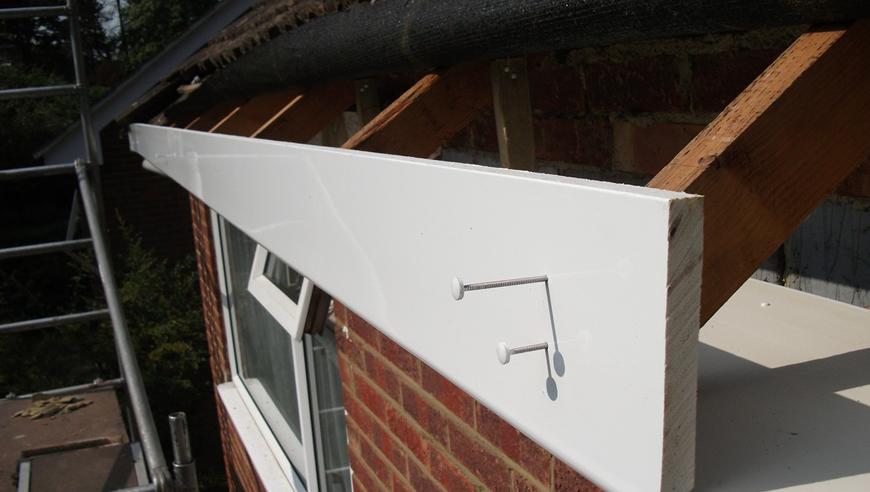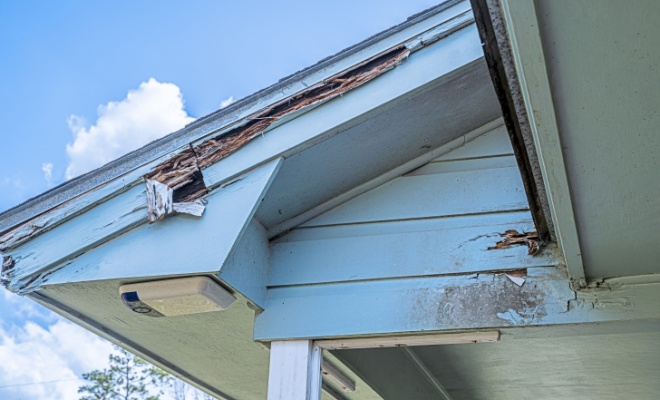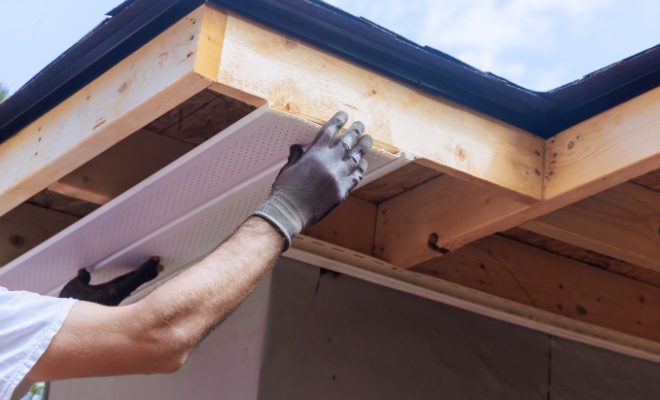Soffits and Fascias Replacement Cost
Last updated 24th July, 2024
Looking for replacement fascia and soffit prices?
This article covers soffit and fascia replacement. We discuss all you need to know about soffits and fascias, including installation, fascia repair, capping and painting soffits. The average cost for roof soffit and fascia replacement, for a 3-bed semi-detached property, is roughly £1000 to £1500.
So, lets get started!

How Much to Replace Soffits and Fascias?
The cost of soffit and fascia replacement will vary depending on the size and type of property, the size of replacement boards, the location, and access to the property. But if we assume good access, the removal and replacement of fascia/soffit boards on a 3 bedroom semi-detached would typically be around £1000-£1500.
This is assuming you don't have your soffits, fascias and guttering, and possibly even eaves felt replaced all at the same time, although this is something you should consider as they also may require scaffolding and are fairly cheap in terms of materials.
Most roofline tradesmen work in pairs and normally charge around £200-£250 per day. Fascia and soffit replacement will usually be around 1-2 days worth of work. In some cases this could stretch to another 1/2 a day depending on whether some roof tiles need replacing or the timber needs treating.
Fascia and Soffit Prices
Here are a few average costs for hiring someone to replace your soffits and fascias:
| Roof Type | House Type | Avg. Cost | Duration |
|---|---|---|---|
| Gable Roof | Not Applicable | £1200 | 1 day |
| Hip Roof | Semi-Detached | £1500 | 1-1.5 days |
| Hip Roof | Detached | £1750 | 1.5-2 days |
Cost Breakdown Calculator
Individual costs for hiring a tradesman to replace the soffits and fascias on a 2-storey semi-detached house with a hip roof and easy access - Total Cost: £2000
Materials & Waste
£700
Tradesmen
£800
Scaffolding
£500
When to Replace Soffits and Fascias
There's no easy way to predict when soffits and fascias will need replacing since there are so many factors that affect the timeframe, not least the Great British weather! Still, there are some tell-tale signs to look out for determine when the time has come:
- Visibly damaged, cracked, or rotting areas
- Damage to gable end mortar
- Leaking gutters
- Signs of pests in the roof space
While these aren't definitive signs that replacement is needed immediately, they certainly justify a closer inspection. You might also replace fascias and soffits as part of an upgrade to others parts of your house, like the roof or window frames.

It's always worth considering replacing old wooden soffits and fascias with durable, long lasting materials like uPVC to ensure you won't need to repeat the job for a long, long time.
Benefits of Replacing Soffits and Fascias
Soffits and fascias play an important role in keeping your house and roof space protected from rough weather. If they are damaged and left to degrade further, your gutters might start to leak, and worse still, your roof rafters might sustain damage, leading to far more costly repair jobs.
You'd also be surprised at the impact fascia have on the aesthetics of your house. Peeling paint, rotting sections, and broken areas bring down the overall appearance of a home, which alone would justify the cost of replacement for most homeowners.
What the Job Entails
This article outlines the typical work carried out during residential works to replace roofline fascia and soffit boards, along with guide prices and brief descriptions of typical problems and reasons leading to the removal and replacement of the existing fascia and soffit boards. Fascia and soffit boards are typically replaced due to rotting (wooden boards), discolouring, or as part of a bigger project such as a new roof or even replacing the guttering.
It's a pretty straightforward job that involves simply removing the old boards and replacing them with new boards, but it does involve working at height so care needs to be taken if attempting it as a DIY job. As always, please do your due diligence and consult a professional contractor before contemplating any major works on your home, this article is not designed to be a substitute for professional advice, rather this is a general overview for your information.
The fascia is the board mounted where the roof meets the outer walls and often called the roofline. Fixed directly to the roof trusses, the fascia usually supports the bottom row of roof tiles and also the roof guttering. The soffit board is under the fascia board and is often ventilated to allow the flow of air into the roof area. These boards actually do a lot of work, dealing with up to several gallons of water per second with typical British winter rainfall, so they do deteriorate over time.
The guttering is often replaced when Fascia and soffit boards are replaced as the guttering has to be removed and refitted anyway, so if guttering is replaced at the same time, the labour costs are greatly reduced.
If you are getting a new roof it also makes sense to replace all the fascia and soffit boards too. The good news is that the modern materials used for roofline products today means that replacing roofline fascia and soffit boards should be a fit and forget option that will likely never need replacing again!

Replacing the roofline products could be done as a DIY job as long as you have some experience and are comfortable working at height with the right safety equipment. Otherwise - leave it to the professionals! Planning permission is not normally required, but if the building is listed then seek advice before planning any job. When removing old boards, there may be some small mainly cosmetic damage to rendering or pointing, if this happens then some re-pointing may be required.
The replacement of the roofline products is generally a straightforward job, but special care should taken with very old fascia and soffit boards as there is a possibility they could contain asbestos, if you suspect this may be the case, do not go near the boards until you have them checked by a professional for safety!
Scaffolding is not necessary for standard fascia and soffit replacement jobs as long as there is access for ladders, however if access is restricted (perhaps due to a conservatory or outbuilding) then scaffolding will be required which will increase the cost significantly.
If cash is tight, there is always a temptation to just replace the sections of fascia boards which are rotten, but invariably this will mean paying to have all the fascia and soffit boards replaced section by section over the next couple of years at a far greater cost, much better to bite the bullet replace it all at once!
FAQs
In the long run, it is probably more economical to replace all rainwater products as the labour costs will be the same reagrdless, so it makes sense to pay that little bit extra and get new gutters to compliment the new fascia and soffit boards. This is especially true if scaffolding is required, always have any necessary work completed whilst the scaffold is already erected and paid for. In fact you should also consider any other work that could be completed while scaffolding is up including any minor repairs to broken roof tiles and repointing.
Sources
https://www.fasciadivision.co.uk/terrace-house-roofline-cost-guide/
https://www.roofingmegastore.co.uk/blog/how-to-replace-soffit-and-fascia-board.html
https://www.tradesuperstoreonline.co.uk/collections/fascias-and-soffits
https://www.eurocell.co.uk/fascia-and-soffits









